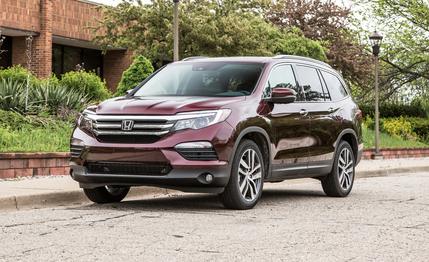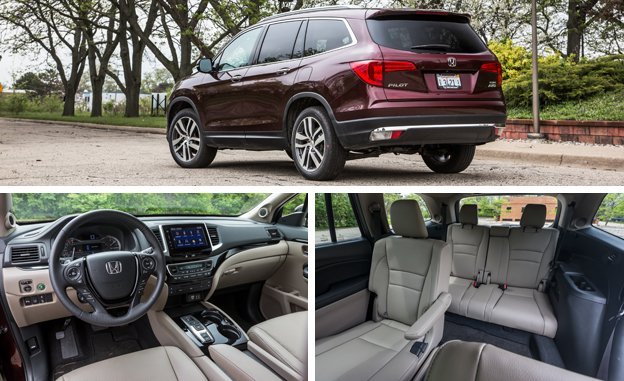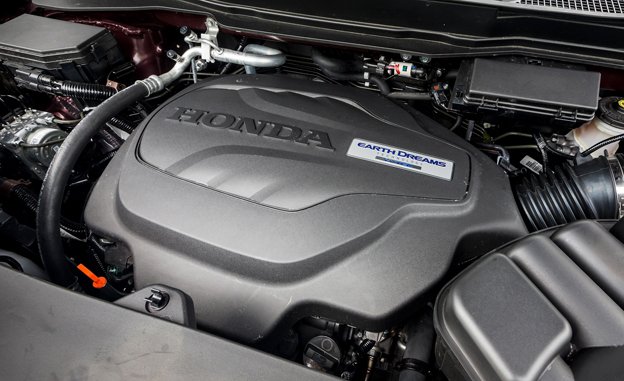
 Instrumented Test
From the August 2015 issue
Instrumented Test
From the August 2015 issue
The arrival of a second child in a couple’s life often means many things: the demise of romance, the start of sibling rivalry, and the purchase of a three-row SUV. As the latter has all but usurped the minivan as the most popular kid-schlepper, the Honda Pilot has become a go-to choice for frazzled parents. Rarely seen without at least one sticker displaying allegiance to a school or sport—as well as one of those reproductively braggadocious stick-family decals—the Pilot’s ubiquity is a testament to its competence.
Honda reliability, a roomy interior, and a practical shape are what sell the Pilot. Absent is any sense of style or luxury. The 2016 Pilot seeks to amend that, and, in so doing, take some of the drudgery out of parenthood even as the vehicle delves further into its role as a surrogate minivan.


Always able, the Pilot didn’t need a rethink, just some refinement. For the third-gen model, that refinement starts with the styling. Whereas the old version tried to look tough, the new model prefers to be sleek, with a unified side-glass area and sweptback corners on the familial Honda front end.
The new Pilot is larger than before, with 1.8 inches more in wheelbase and 3.5 inches extra in length. Yet its additional inches did not bring with them additional pounds. The loaded Elite model with four-wheel drive that we tested weighed 4302 pounds, 309 fewer than the Pilot 4WD we ran in 2011. As parents know, family duty is often a recipe for packing on extra pounds, so give the Pilot a round of applause for its weight-loss success.
A 3.5-liter V-6 again powers the Pilot, but this is a new, direct-injected engine. A variant of the unit in the Acura MDX, it makes 10 horsepower less here but runs on regular fuel. Its output of 280 horsepower and 262 pound-feet of torque handily beats the old engine’s 250 and 253. Honda scrapped the previous five-speed automatic in favor of a six-speed in LX, EX, and EX-L models, while the fancier Touring and new Elite trim levels get fitted with the ZF nine-speed, which is also borrowed from the Acura.


With more power, additional gears, and less mass, the Pilot hustles to 60 mph in 6.1 seconds, almost two seconds quicker than before. And it slurps less fuel. EPA figures increase from 17/24 mpg (AWD) to 18/26 mpg, and 19/26 for Touring and Elite models, which also come with auto stop-start. Forgoing AWD for front-drive adds 1 mpg to the above figures. We saw 18 mpg.
Four-wheel-drive models get a choice of four powertrain modes—normal, snow, sand, and mud—which replace the previous VTM-4 Lock button. Honda’s AWD system also has a torque-vectoring function that can apportion torque across the rear axle to aid cornering. Four-wheel-drive versions also are rated to tow 5000 pounds, up from 4500 previously, while front-drive models can tug only 3500 pounds.
One might expect a livelier powertrain and lower mass to make for a more engaging driving experience, but that’s not really what the Pilot came here to do. On the narrow, winding byways of northern Kentucky, the Pilot just felt large. The steering, now electrically assisted, is overly light at low speeds and doesn’t load up appreciably as you wind in more lock, making it less confidence-inspiring than it might be.